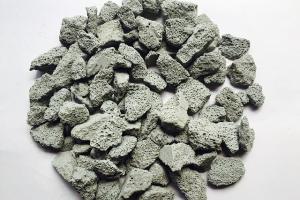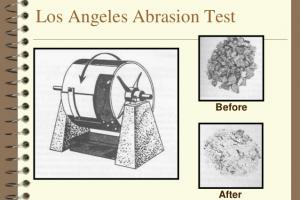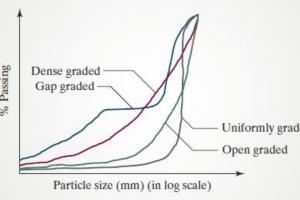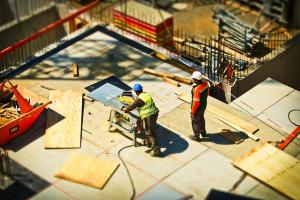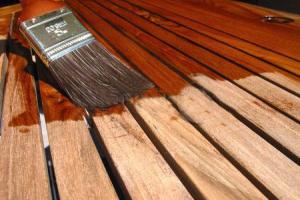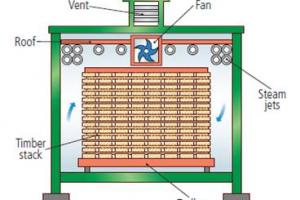Types of Cement & Characteristics of each Type

Classification of Cements
-
Type I Normal cement
-
Type IA Normal + air entrained agents
-
Type II Moderate sulphate resistant cement
-
Type IIA Moderate sulphate resistant cement + air entrained agents
-
Type III High early strength cement
-
Type IIIA High early strength cement + air entrained agents
-
Type IV Low heat cement
-
Type V High sulphate resistant cement
Type I
Characteristics
-
Used for general purpose
-
Available widely
-
Used where concrete is not subjected to specific exposures such as sulphate attacks from soil or water or to an objectionable temperature rise due to heat of hydration
- Suitable for all uses e.g pavement, sidewalk, R.C buildings, bridges, water tanks, culverts, sewers etc. This type of cement reaches its design strength in 28 days.
Contents
-
MgO is less than 0.6 %
-
Insolouble residue is less than 0.75 %
-
Loss on ignition is less than 3%
-
Insolouble residue
- It is determined by treatment with HCl. It is due to impurities in Gypsum.
Loss on ignition:
- 200°C temperature is maintained for 1 hour for 10 grams of material.
Air entrained agents:
Smaller quantities of air entraining materials are interground with clinker at the time of manufacture to produce minte, well distributed and completely separated air bubbles. These are in millions per cubic feet. Used against freezing and thawing.
Applications of Type I Cement
- It is a general-purpose cement used in concrete for making pavements, floors, reinforced concrete buildings, bridges, tanks, pipes, etc.
- It is for all uses where the special properties of other cement types are not required, such as sulfate attack from soil and water, or to an objectionable temperature rise.
Type II (Moderate Sulphate Resistance Cement)
This type of cement is used where precaution against moderate sulphate attack is important. Like where concrete will come in contact with ground or buried in ground. e.g in drainage structures, large piers, retaining walls etc. Type II generates less heat than type I and reaches its desired strength in 45 days.
Applications of Type II Cement
- It is used where precaution against moderate sulfate attack is important, as in drainage structures, which may be subjected to a moderate sulfate concentration from ground waters. It has moderate sulfate resistance because it contains no more than 8% tricalcium aluminate (C3A).
- It usually generates less heat of hydration at a slower rate than Type I cement and therefore can be used in mass structures such as large piers, heavy abutments, and retaining walls.
- Due to less heat generation it can be preferred in hot weather.
Type IIA
It is same as Type II but just having air entraining agents.
Type III (High early strength cement/Rapid hardening cement)
-
High C3S content upto 70%
-
Also it has high fineness and have minimum surface area of 325 m2/kg
-
It is used where formwork is to be removed quickly or sufficient strength for further construction is required. It has high heat of hydration and achieves its design strength in 7 days or less. Due to high heat generation, it should not be used in mass concreting or large structural section. Though in cold climate it may serve well.
Applications of Type III Cements
- It is chemically and physically similar to Type I cement, except that its particles have been ground finer.
- It provides high early strengths at an early period, usually a week or less.
- It is used when forms need to be removed as soon as possible or when the structure must be put into service quickly.
- It is preferred in cold weather for reduction in the curing period.
Type IIIA
It is the same as Type III plus air entrained agents
Type IV (Low heat cement)
This type of cement is used in mass concreting because it generates less heat, though sets slowly but becomes much stronger after curing. Its design strength is 90 days.
Applications of Type IV Cements
- It is used where the rate and amount of heat generated from hydration must be minimized.
- It develops strength at a slower rate than other cement types.
- It is most suitably used in massive concrete structures, such as large gravity dams, where the temperature rise resulting from heat generated during hardening and must be minimized to control the concrete cracking.
Type V (High sulphate resisting cement)
When concrete is exposed to highly alkaline soil or water having high sulphate content then this type is used. This cement has a low C3A content so as to avoid sulphate attack from outside the concrete. Otherwise the formation of calcium sulphoaluminate and gypsum would cause disruption of concrete due to an increase in volume of resultant compounds.
Applications of Type V Cements
- It is used only in concrete exposed to severe sulfate action – principally where soils or ground waters have a high sulfate content.
- Its high sulfate resistance is due to its low C3A content of about 4%.
- It is not resistant to acids and other highly corrosive substances.



